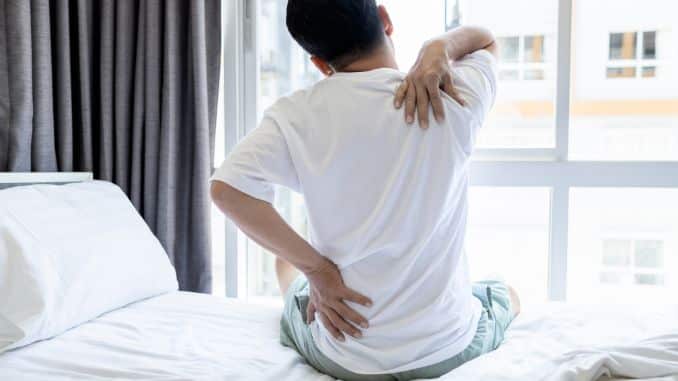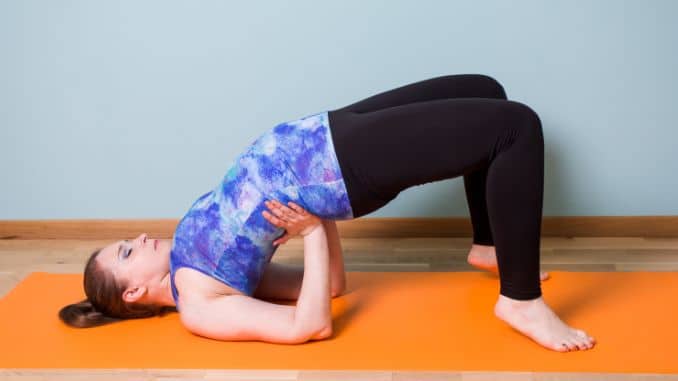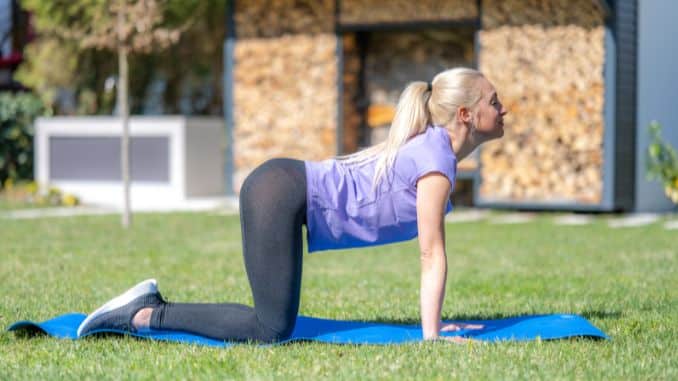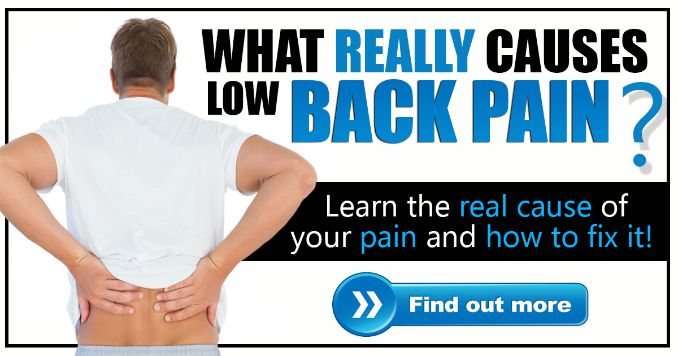
Are you feeling the ache from hours at your desk or dealing with back pain? Try mid-back stretches—they might be the key to helping you loosen tight muscles and find relief. In our crazy, fast-paced lives, we often forget how crucial it is to keep our backs flexible and pain-free. Toss in a few mid-back stretches each day, and you’ll likely notice improvements in flexibility, less discomfort, and an overall boost in well-being.
Whether you’re a desk jockey, an athlete, or someone trying to shake off the daily stress, these stretches can do wonders. So, say goodbye to that rigid discomfort and hello to a more comfortable, flexible you!
Understanding Mid-Back Tension
Mid-back tension is common, thanks to poor posture, sedentary lifestyles, and stress. The thoracic spine, or mid-back, supports the upper body and facilitates movements like bending and twisting. When it gets tense, discomfort, limited motion, and pain can follow. Prolonged sitting and repetitive movements worsen the problem. Recognizing mid-back tension signs is crucial to addressing it effectively.
Incorporating mid-back stretches into your routine can release built-up tension, improve posture, and boost thoracic spine flexibility. Prioritize mid-back care with targeted stretches to reduce discomfort and enhance overall physical well-being. Your posture, mobility, and breathing will thank you!
The Importance Of Mid-Back Flexibility
Mid-back flexibility is vital for overall well-being, supporting proper posture, mobility, and range of motion. A flexible thoracic spine reduces the risk of musculoskeletal issues, discomfort, and pain. It enhances respiratory function, benefiting lung capacity, and is crucial for athletes, improving performance and movement precision.
Moreover, maintaining mid-back flexibility supports spinal health, reduces muscle tension, and aids in functional daily movements. Regular exercises targeting mid-back flexibility are essential to encourage physical well-being and enhance overall life quality.
Tight Middle Back Muscles Symptoms
When your mid back muscles are tight, it can result in discomfort and sharp pains that affect your daily life. The symptoms of tight middle back muscles can manifest as dull, persistent pain in the mid-back region, restricted movement, and difficulty in performing everyday tasks. You may also experience tension headaches and reduced flexibility in your upper body.
These symptoms can affect your overall well-being. This leads to discomfort and limits your capacity to engage in physical activities, work, or even enjoy leisure time. Tight middle back muscles are often the result of poor posture, prolonged sitting, or overexertion without proper stretching and recovery.
These symptoms can help you recognize the importance of addressing mid-back tightness. And also incorporating targeted stretches into your routine to find relief.
Common Causes Of Mid-Back Tension
Understanding the common causes of mid-back tension is crucial for addressing the issue effectively and implementing targeted stretches to alleviate discomfort and enhance flexibility.
Several factors contribute to stress in the mid-back, and identifying these sources can help you implement preemptive actions to tackle the problem and avoid its recurrence.
-
Poor Posture
Extended durations of sitting or standing with improper spinal alignment can lead to the accumulation of tension in the mid-back. Slouching, hunching over electronic devices, an upright posture, and maintaining static positions for extended periods can contribute to stiffness and discomfort.
-
Sedentary Lifestyle
Insufficient engagement in physical activity and limited movement may result in muscle imbalances and restricted mobility in the mid-back. When the muscles in this area are not regularly engaged and stretched, they can become tight and prone to tension.
-
Stress And Emotional Tension
The physical manifestation of emotional stress and anxiety can result in constant aches, muscle tightness, and discomfort in the mid-back. The body’s natural response to stress can result in muscular tension, particularly in the upper back, chest muscles, and shoulder blades.
By recognizing these common causes of mid-back tension, there are proactive measures you can take to tackle the issue and incorporate targeted stretches into your routine to alleviate discomfort, relieve pain, promote flexibility, and enhance your overall well-being.
How To Stretch Mid-Back Strain
To stretch the mid back effectively, focusing on exercises that target the muscles in this area is essential. Incorporating a variety of stretches into your routine can provide comprehensive relief and promote overall back health. When stretching the mid back, listening to your body and avoiding overexertion is crucial. Gradually ease into each stretch, holding it for at least 30 seconds to allow the tight mid-back muscles to relax and lengthen.
Remember to breathe deeply and evenly throughout each stretch, allowing your breath to guide your body forward and deeper into the movement. By incorporating mid-back stretches into the daily gentle yoga exercise, you can gradually improve your flexibility and reduce the strain on your mid-back muscles.
Benefits Of Incorporating Mid-Back Stretches Into Your Routine
Incorporating mid-back stretches into your daily routine provides numerous advantages that can enhance your physical comfort, flexibility, and overall well-being. Mid-back stretches can significantly benefit your wellness routine, whether aimed at easing tension, enhancing posture, or boosting athletic performance.
Alleviate tension middle back pain and discomfort: Mid-back stretches can help release built-up tension and tightness in the thoracic spine muscles, promoting relaxation and relief from back pain. Adding these stretches to your daily regimen can result in a clear decrease in stiffness and discomfort in the mid-back region.
Improve flexibility and range of motion: Regular mid-back stretching can enhance the flexibility and mobility of the thoracic spine, allowing for smoother, more comfortable movement patterns. Increased flexibility in the mid-back can contribute to better posture, reduced stiffness, and improved overall physical comfort.
Enhance posture and spinal alignment: Targeted mid-back stretches can support better posture and spinal alignment by promoting tension release and encouraging the muscles’ proper engagement. Improved posture can reduce strain on the spine and surrounding muscles, supporting a more balanced and aligned body position.
Support spinal health and function:
- Prioritizing mid-back stretches can improve overall spinal health.
- Reducing the risk of discomfort.
- Muscle imbalances.
- Postural issues.
By caring for the flexibility and mobility of the mid-back, you can support optimal spinal function and prevent more severe problems.
Adding mid-back stretches to your daily regimen allows you to enjoy these advantages and more, ultimately improving your physical ease, suppleness, and overall well-being.
Best Mid Back Stretches
1. Arching Back
Firstly, begin in an upright sitting position on the front of a chair with your knees bent and feet flat on the floor, maintaining good alignment with your head, shoulders, and hips. Secondly, bring your arms across your chest. Thirdly, engage your core and slowly arch your back as you lean your head backward, focusing on the stretch happening in your mid-back area. Lastly, straighten your mid back to return to the starting position. Repeat the movement as needed—complete 1 set of 5 repetitions.
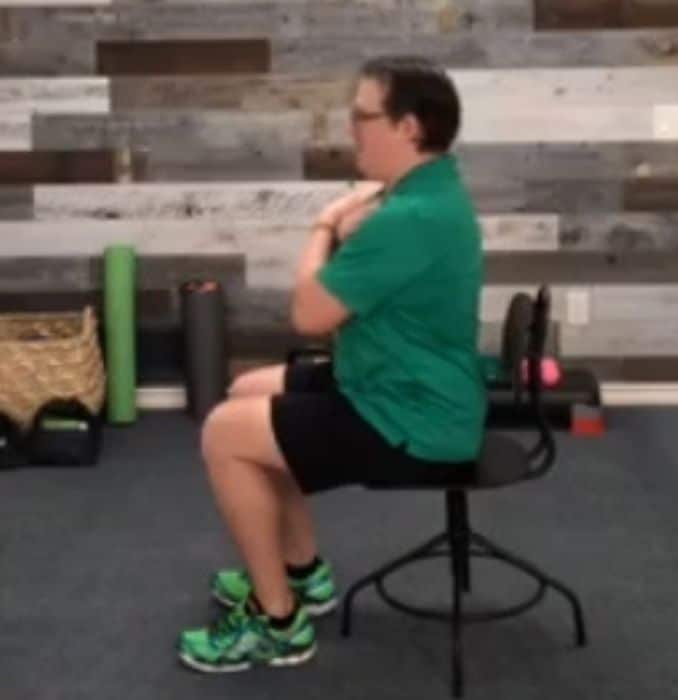 |
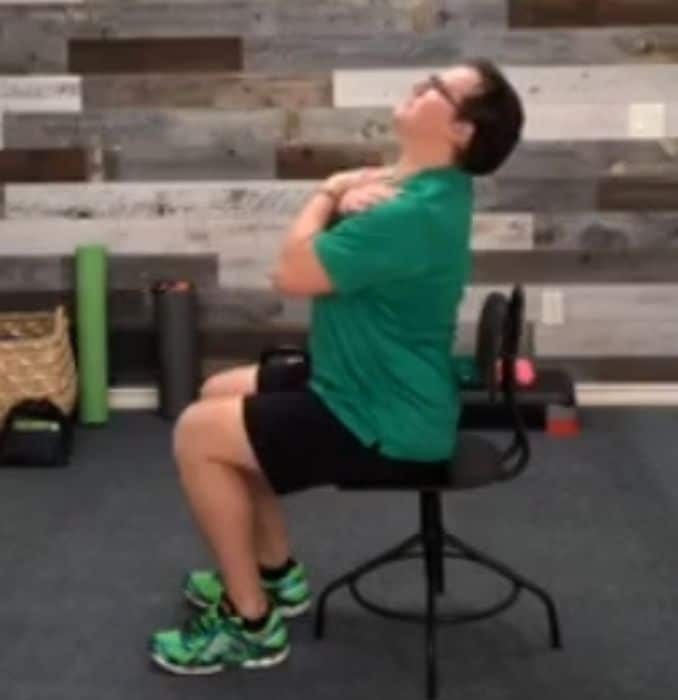 |
2. Seated Twist
Begin in an upright sitting position on the front of a chair with your knees bent and feet flat on the floor, maintaining good alignment with your head, shoulders, and hips. Then, bring your arms across your chest. Afterward, engage your core and slowly twist your upper body to one side. Finally, return to the neutral position and repeat the movement on the opposite side. Complete the movement with 1 set of 5 repetitions on each side.
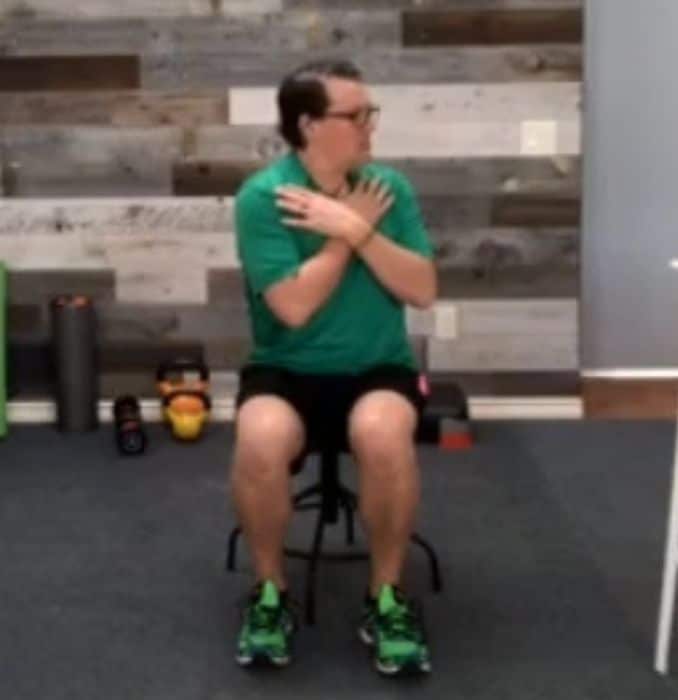 |
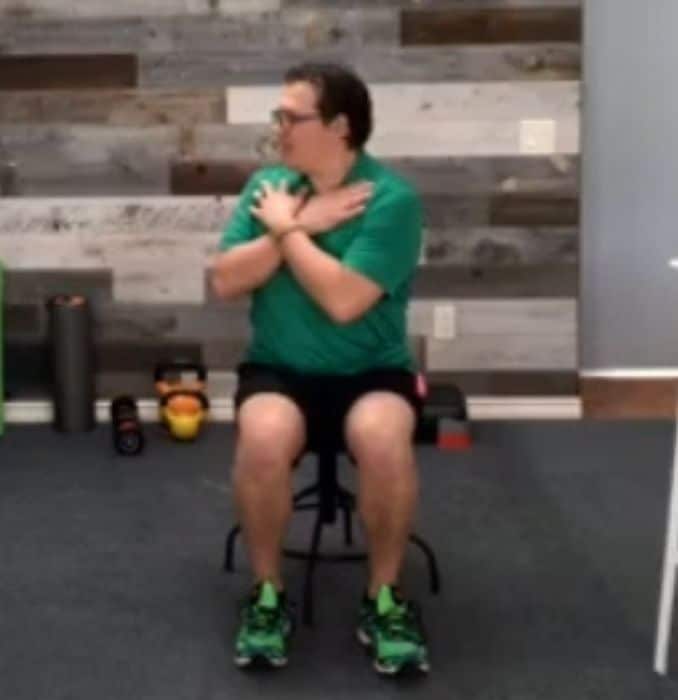 |
3. Seated Side Bend
Firstly, begin in an upright sitting position on the front of a chair with your knees bent and feet flat on the floor, maintaining good alignment with your head, shoulders, and hips. Secondly, bring your arms across your chest. Thirdly, engage your core and slowly bend your upper body to one side. Lastly, return to the starting position and repeat the movement on the opposite side. Complete the movement with 1 set of 5 repetitions on each side.
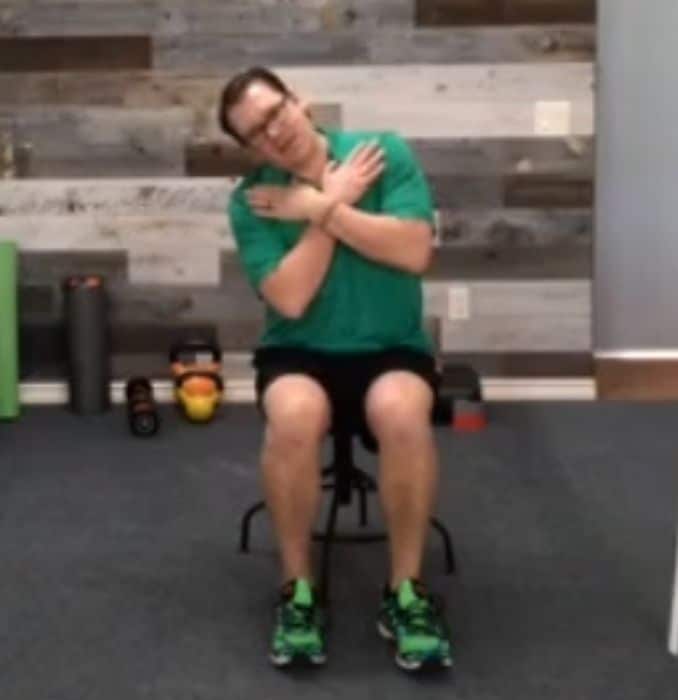 |
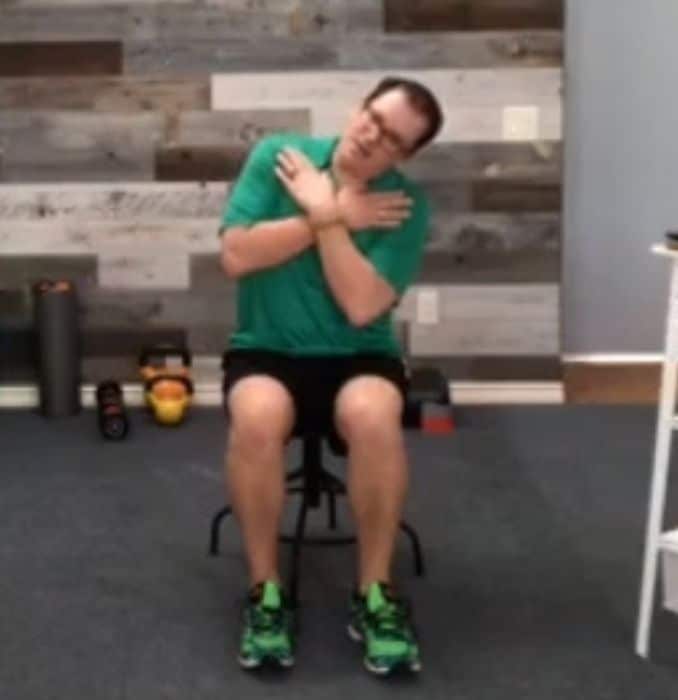 |
4. Seated Twist With Side Bend
Begin in an upright sitting position on the front of a chair with your knees bent and feet flat on the floor, maintaining good alignment with your head, shoulders, and hips. Then, bring your arms across your chest. Afterward, Engage your core, rotate your upper body towards the left-hand side, and do a side bend movement. Then, return to the starting position and repeat the sequence of movements on the opposite side. Finally, Complete with 1 set of 5 repetitions on each side.
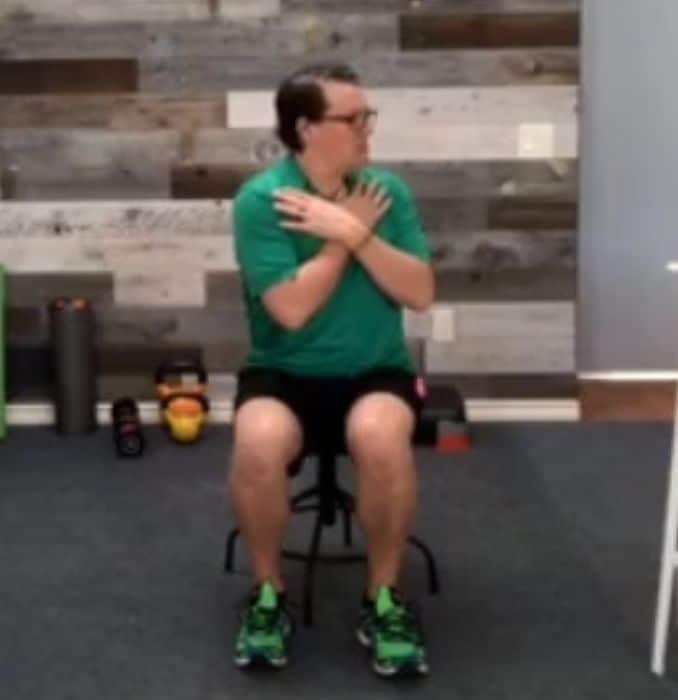 |
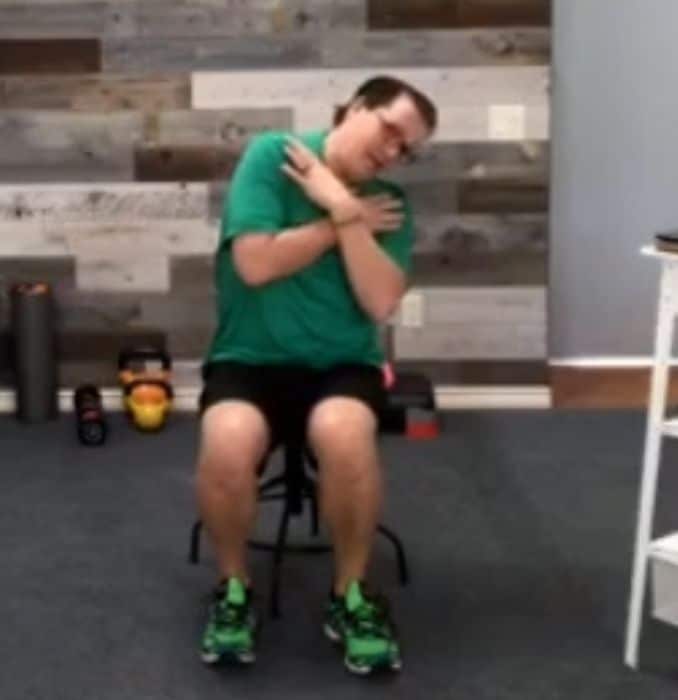 |
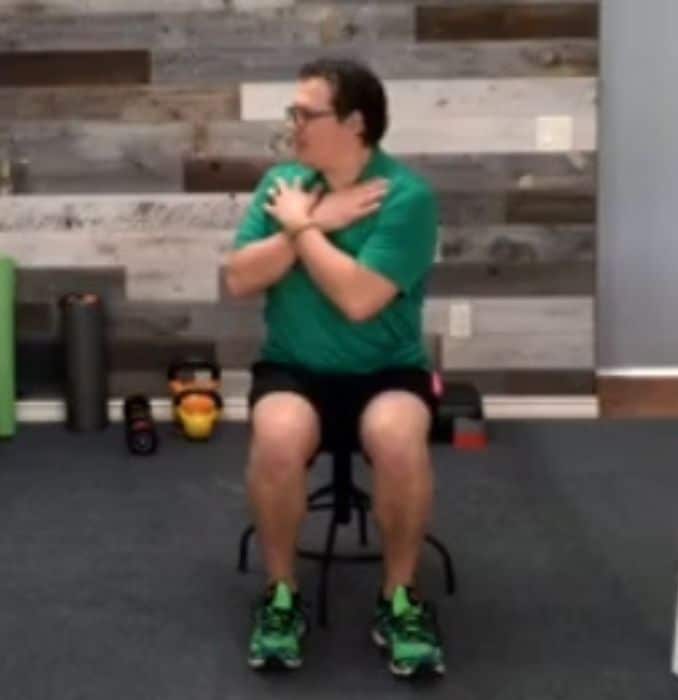 |
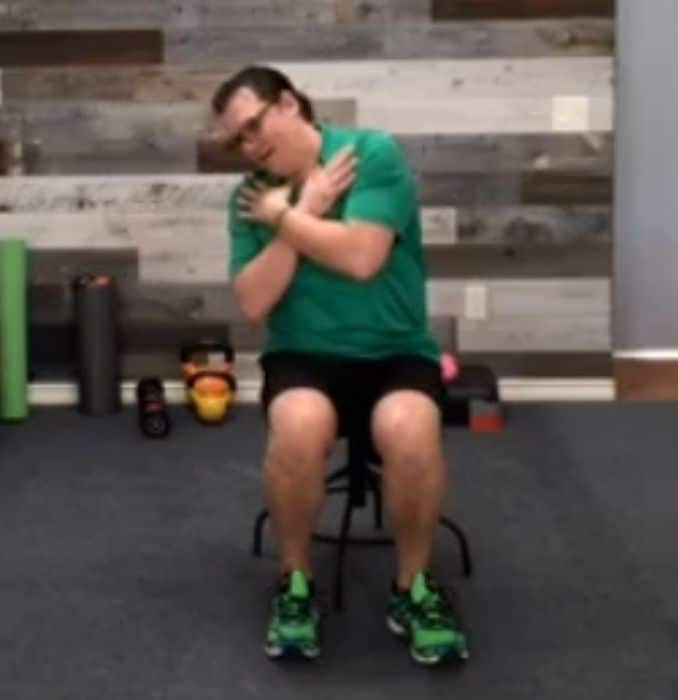 |
5. Seated Twist With Forward Bend
Firstly, begin in an upright sitting position on the front of a chair with your knees bent and feet flat on the floor, maintaining good alignment with your head, shoulders, and hips. Secondly, bring your arms across your chest. Thirdly, engage your core, rotate your upper body towards the left-arm side, and lower your right shoulder forward into an angled forward bend. do an angled forward side bend movement. Lastly, complete with 1 set of 5 repetitions on each side.
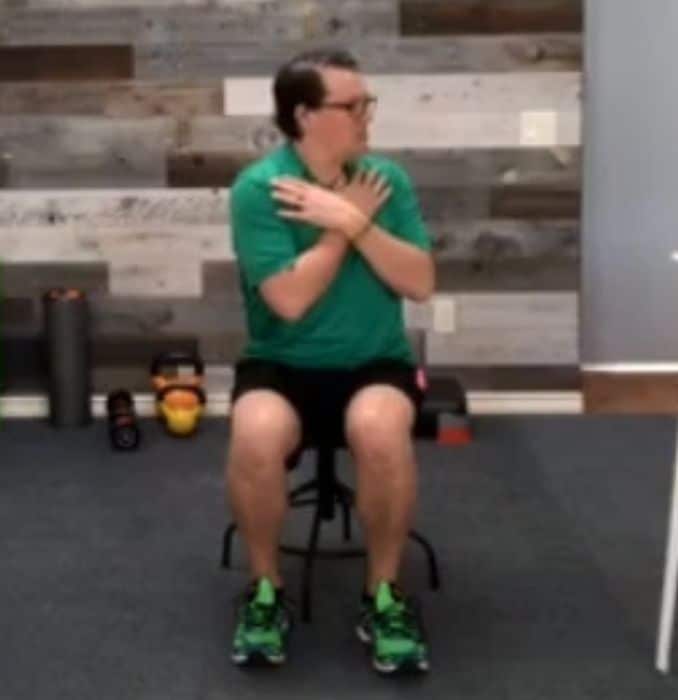 |
 |
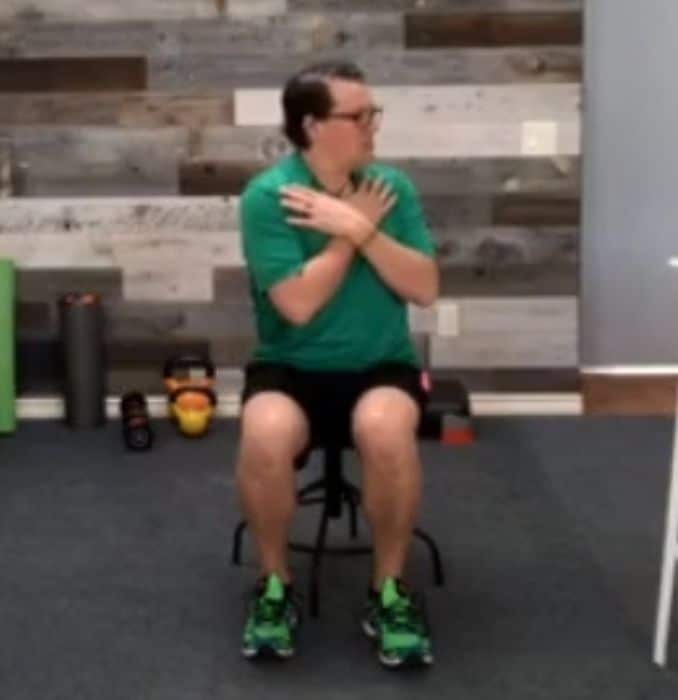 |
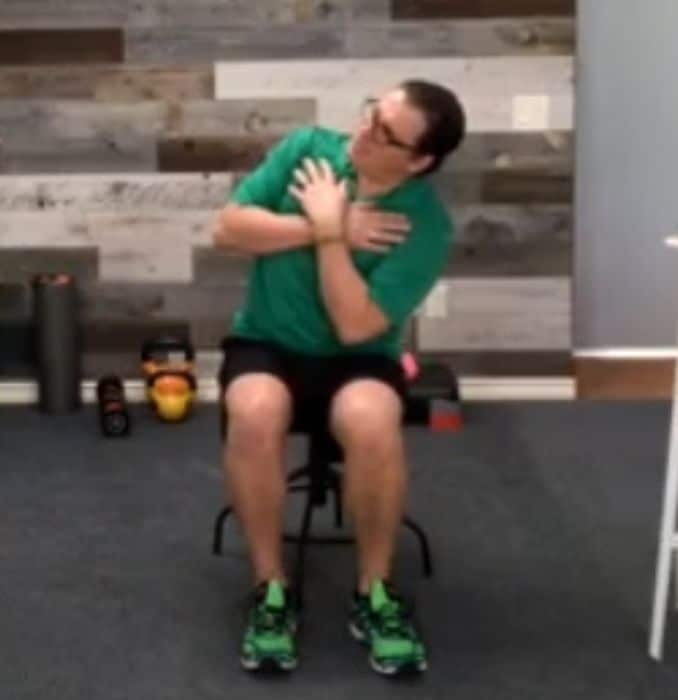 |
Mid Back Stretches For Pain
By incorporating these and other effective mid-back stretches into your routine, you can experience targeted relief, improved flexibility, and enhanced comfort in the thoracic spine.
Mid Back Stretches For Pain
If you’re experiencing mid-back pain, incorporating targeted stretches into your routine can help to alleviate discomfort and promote healing. When engaging in mid-back exercises for pain relief, it is crucial to concentrate on gentle movements that provide support to the affected area without causing further strain.
Additionally, maintaining proper posture and engaging in regular physical activity can reduce mid-back pain in the long term. You can proactively address and alleviate mid-back pain by taking specific measures such as prioritizing your back health and incorporating effective stretches.
Mid Back Stretches Yoga
Yoga offers a holistic approach to mid-back stretches, combining movement, breath, and mindfulness to promote flexibility and alleviate tension. By integrating yoga poses specifically designed to target the mid back, you can experience the transformative effects of this ancient practice on your overall well-being. Cobra, Sphinx, and Bow Pose can stretch mid-back muscles, promoting flexibility and alleviating discomfort.
Additionally, regular yoga can contribute to improved posture, enhanced body awareness, and reduced stress, all of which can positively impact your mid-back health.
Combining Mid-Back Stretches With Other Stretches
-
Upper Back Stretches
Discover effective stretches explicitly targeting the upper back. These exercises aim to alleviate tension and improve mobility in the upper region of your spine.
-
Lower Back Stretches
Explore stretches designed to target the lower back, addressing common areas of discomfort and promoting flexibility in the lumbar region.
-
Upper Middle Back Stretches
For a more focused approach, delve into stretches targeting the upper-middle back. These exercises aim to improve posture and relieve tension in this critical area.
Conclusion: The Importance Of Consistent Stretching
In conclusion, prioritizing mid-back flexibility through targeted stretches is crucial for optimal spinal health, reducing discomfort, and fostering an active, pain-free lifestyle. Understanding mid-back tension sources, recognizing the benefits of incorporating these stretches, and seeking professional guidance can elevate your stretching practice.
Moreover, consistency is vital—regular mid-back stretching accumulates positive effects on your well-being. Integrate stretches into your daily routine, whether in the morning, during work breaks, or in the evening, for noticeable improvements in flexibility, tension reduction, and overall well-being. Embrace mid-back flexibility’s importance, commit to a consistent routine, and unlock the transformative power for a supple, pain-free back.
Now you can relieve your constant back pain in days and cure it in weeks by following a simple exercise program. Don’t spend money on medicines, pills, supplements, doctors, drugs, or surgery. “Low Back Pain Solved” shows you how to alleviate pain and become more flexible in only 3 days.


